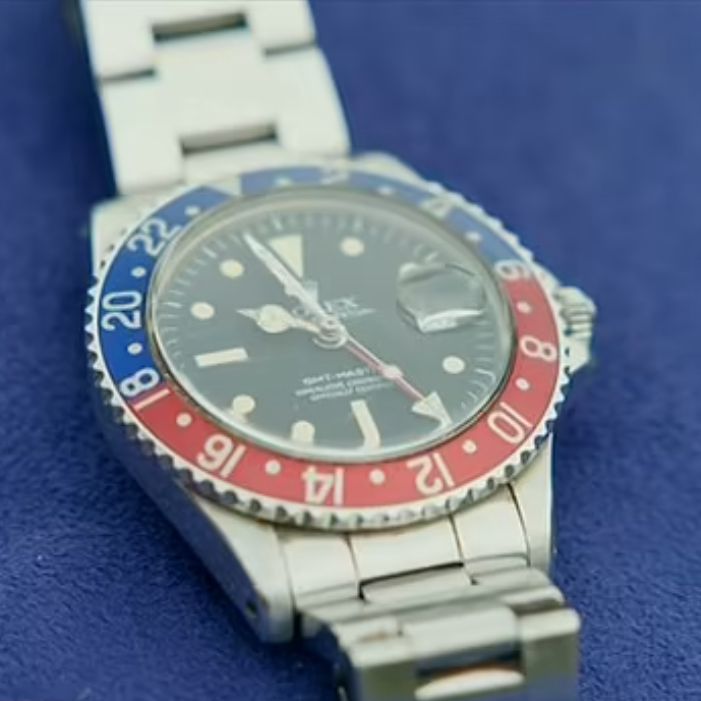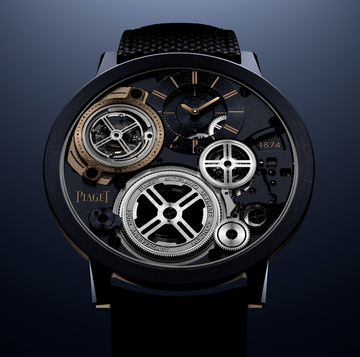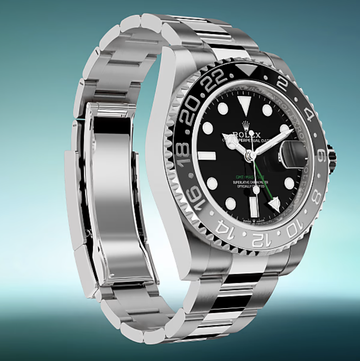Do you know what separates horology weirdos – like yours truly – from muggles? When you see a Seventies Rolex GMT-Master get a £7,000 valuation on Antiques Roadshow and think: is that it?
After all, it was only last year that a feet-first red Sub (to the non-weirdos: a Rolex with the 'Submariner' name emblazoned in crimson, and the depth rating labelled as '660ft = 200m', rather than the other way round) was valued at £20k.
Cut to the classic Antiques Roadshow scene of a man swearing he won't sell a family heirloom that, in his head, is already on eBay.
But even that pales in comparison to a Paul Newman Daytona that turned up in 2020 on the show's US iteration, brought in by an owner who'd paid $345 for it in 1974, as a solid watch to wear diving.
Luckily, he decided it was a bit too nice to subject to saltwater and instead squirrelled it away, unworn, in a safe, along with its box and paperwork.
Forty years on, that overcautious decision netted him a potential $700,000 at auction.
So, £7,000?
Meh. What else you got?
The muggles, however, are steaming following the airing of the episode on Sunday evening (which you can watch here). Furious that yet another Rolex – perhaps the only watch brand whose vintage pieces are near-guaranteed to appreciate exponentially in value – had popped up on a show whose raison d'etre is to showcase vintage pieces that have appreciated exponentially in value, they tweeted such perceptive critiques such as:
"Things you'd like to hear the experts say on the #AntiquesRoadshow: 'Not another fucking Rolex!'"
And:
"Is #AntiquesRoadshow sponsored by Rolex? Every chuffing week!".
Now, Antiques Roadshow is not sponsored by Rolex, and not just because the BBC is licence fee-funded. The brand has long had a, shall we say, testy relationship with second-hand sales, despite second-hand being the primary way most people can get their hands on one these days.
Although that changed last year when it finally launched its own certified pre-owned programme, through subsidiary Bucherer.
So, if you are going to buy a second hand Rolex, then Rolex would much rather you did so from Rolex, and not some confused chap in Wolverhampton with pound signs in his eyes.
Rolex makes a million or so watches a year, which sounds a lot, but is a fraction of the number of Rolex peoples would like to buy. Which means that there are innumerably more old Rolexes out there than new Rolexes, many with some emotional story attached.
Hence why they're always on Antiques Roadshow.
To an assistant producer who needs guaranteed tears from some overwhelmed member of the public who still misses their dad, a Rolex is a slam-dunk.
The only reason you don't see more is that, to keep up with demand, every watch retailer on earth is falling over themselves to get your Rolex onto its shelves. To be honest, it's amazing that they even find their way onto Antiques Roadshow without someone from Watches of Switzerland getting to it first.
Still, perhaps you have to be a watch weirdo to appreciate what made this particular Rolex special. It was gifted to the owner's father, a welding professor, by a grateful Omani student in the Seventies. The student pressed it on him, stating that compared to all the gold Rolexes he owned, this workaday one was meaningless. Maybe so, at the time.
But as any collector knows by the Pepsi dial, cyclops lens, and bonus hour hand, this is a GMT-Master, forerunner of the GMT-Master II that Rolex still makes. It was one of the first GMTs – watches that show the time in two time zones – and was created in 1954 to a brief from Pan Am, whose pilots were starting to fly internationally and needed to know the time where they were taking off, and where they were landing.
The bicoloured dial was designed to denote day from night. Unlike modern GMTs, the extra hand wasn't independently settable. It completed a full trip round the dial once every 24 hours, so by rotating the bezel you could denote the second time zone. The Pepsi dial has since become iconic, appearing on watches by everyone from Seiko to Tag Heuer, as well as being the signature colour of the GMT-Master II (current waitlist: 20 years).
Which is you'll find flawless GMT-Masters changing hands for much more than £7,000 – more like double that, as a starting point. No wonder watch weirdos are so hard to impress. Although apparently not quite as hard to impress as the Antiques Roadshow weirdos of Twitter.












